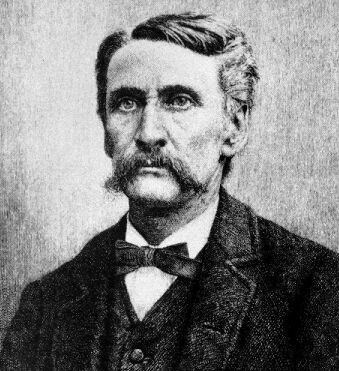Name Sherburne Burnham | Role Astronomer | |
 | ||
Books Measures of Double Stars with the 40-inch Refractor of the Yerkes Observatory in 1900 and 1901 Awards Gold Medal of the Royal Astronomical Society | ||
Sherburne Wesley Burnham (December 12, 1838 – March 11, 1921) was an American astronomer.
Biography
He was born at Thetford, Vermont. His parents were Roswell O. and Marinda (née Foote) Burnham. He graduated from the academy in Thetford, and that was the extent of his schooling.
He taught himself shorthand, and by 1858 was in New York City. He was a reporter for the Union Army in New Orleans during the Civil War. In New Orleans, he bought a copy of Geography of the Heavens by Elijah H. Burritt, which piqued his interest in astronomy. After the war, he moved to Chicago and worked as a court reporter for over 20 years. At night he was an amateur astronomer, except for four years (1888-1892) he worked as a full-time astronomer at Lick Observatory. He left court reporting in 1902, but remained in Chicago. From 1897 to 1914 he was an astronomer at Yerkes Observatory.
In 1873 – 1874, he produced a catalog of double stars. He became a fellow of the Royal Astronomical Society. He continued to identify double stars and later published the General Catalogue of 1290 Double Stars. In 1906, he published the Burnham Double Star Catalogue, containing 13,665 pairs of double stars.
For more than fifty years he spent all his free time observing the heavens, principally concerning himself with binary stars. Friedrich Georg Wilhelm von Struve and Otto Wilhelm von Struve had catalogued a good number of binary stars working at the Observatories of Dorpat and Pulkovo and using 23- and 38-cm telescopes. During the 1840s it was believed that essentially all the binary stars visible to the instruments of the day had been discovered. Burnham, with his 15 cm (5.9 in) instrument, found 451 new ones from 1872 to 1877. A European astronomer, Baron Dembowski, helped him by measuring the newly discovered binaries. The quality of Burnham's work opened the doors of observatories for him and he had access to more powerful instruments at Lick, Yerkes and other observatories. He is credited with having discovered 1340 binary stars.
Burnham discovered the first example of, what would be called a half century later, a Herbig–Haro object: Burnham's Nebula (now labeled as HH255).
He received the Gold Medal of the Royal Astronomical Society in 1894. The French Academy of Sciences awarded him the Lalande Prize for 1904.
The lunar crater Burnham and asteroid 834 Burnhamia were named in his honour.
